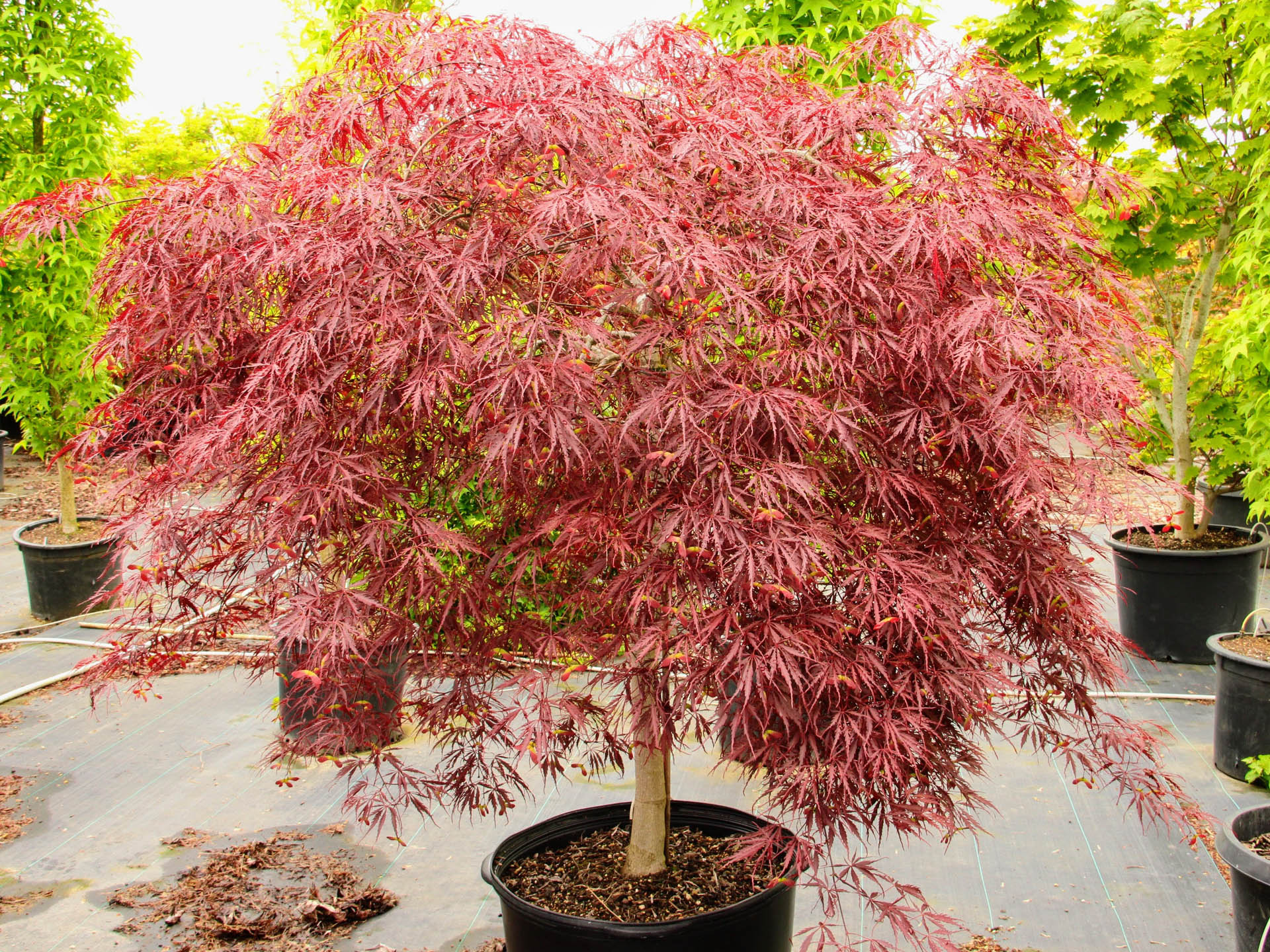
The ‘Seiryu’ is easy to care for and is low maintenance, making it a perfect choice for anyone looking for a unique tree that will add beauty and interest to their home. The young leaves are marbled with red, then turn pure green in the summer and gold with crimson flushes in the fall, making it a gorgeous tree for any yard. It is an excellent addition to any tiny area, reaching a height of 10-15 feet and a width of 6-8 feet. The ‘Seiryu’ is a unique Japanese maple known for its vase-like shape. Whether you are looking for seasonal color or year-round interest, the Red cascade weeping Japanese maple will add beauty and style to your home. It has a big spread of 7-9 feet, making it an ideal focal point in your yard. This tree grows quickly, reaching 4-6 feet in ten years. On the other hand, the leaves change a brilliant crimson in the fall, providing great contrast to the other plants in your garden. The foliage becomes dark red in the spring, gradually turning bronze and then green as the summer progresses. The Red cascade weeping Japanese maple is a stunning addition to any landscape. Whether you are looking to add color or want a unique focal point, the ‘Sangu Kaku’ is an excellent choice. This tree can grow 15-20 feet tall and almost as wide, making it a perfect specimen tree. They become a deeper green and then a lighter peach-gold in the fall in the summer. The colorful twigs stand out against the bright green new leaves. This tree, also known as the Coral Bark Maple, has bright-colored branches that are simply magnificent in the winter and spring. The ‘Sangu Kaku’ is a beautiful and unique tree that is perfect for adding interest to any yard or garden. Here are types of Japanese maple that can withstand direct light. If you live in a sunny area and would still love to plant a Japanese maple, fret no more. If you live in an area with frigid winters, you may need to wrap your plant in burlap or another protective material to prevent wind damage. It is also important to water your plant deeply but less frequently.Īllow the soil to dry out slightly between watering so that the roots don’t stay wet all the time. This can be done by planting it in a shady spot or using a shading cloth during the day’s hottest hours. It is essential to provide your Japanese maple with some protection from the sun to prevent leaf burn. If leaves are exposed to strong winds or freezing temperatures, they can become dried out and damaged. Finally, wind and cold weather can also cause leaf burn.

This can lead to brown patches on the leaves or even complete leaf loss. If the plant’s roots are constantly wet, they can start to rot. Overwatering is one of the most common reasons for leaves to burn. This can cause the edges of the leaves to turn brown and crispy. When leaves are exposed to direct sunlight, they can become stressed and lose moisture.

The most common cause is exposure to sunlight.

The first step in preventing leaf burn is to understand the causes. Leaf burn on Japanese maple is a common problem faced by gardeners. Final Thoughts Leaf Burn On Japanese Maple


 0 kommentar(er)
0 kommentar(er)
